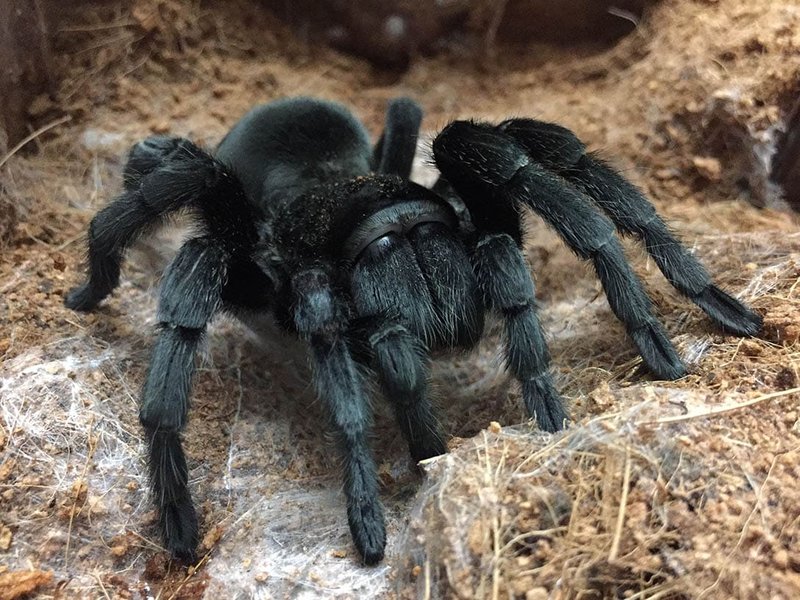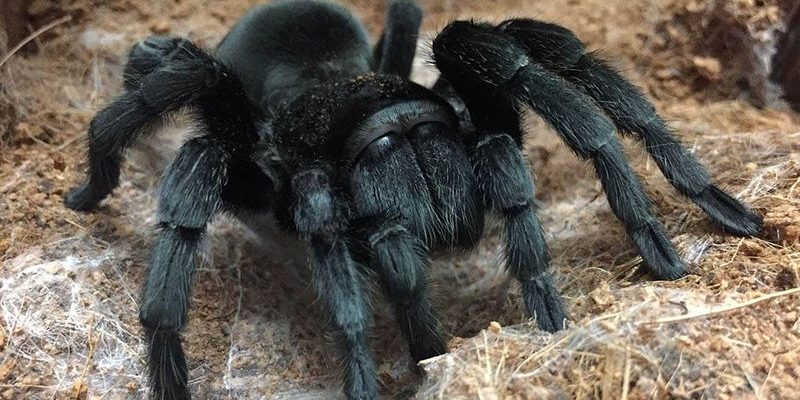
Owning a Brazilian black tarantula offers a unique experience. They’re low-maintenance compared to traditional pets and can be a great way to learn about arachnids. This article will walk you through everything you need to know about keeping one of these beauties, from setting up their habitat to feeding them effectively.
Understanding the Brazilian Black Tarantula
Before you dive into the nitty-gritty of care and feeding, let’s get to know the Brazilian black tarantula a bit better. Known scientifically as *Grammostola pulchra*, this species is easily recognizable with its stunning glossy black body and robust size. They can grow up to 5-6 inches across, so they definitely make a statement.
These tarantulas are native to the rainforests of Brazil, which helps explain some of their unique behaviors and needs. They’re known for their docile nature, making them a popular choice for novice spider enthusiasts. However, just because they’re friendly doesn’t mean they don’t need special attention.
You might be wondering how to tell if a Brazilian black is right for you. If you’re intrigued by their beauty and want a pet that’s more about observation than interaction, this could be the perfect fit.
Setting Up the Perfect Habitat
Creating a welcoming environment for your Brazilian black tarantula is crucial. Think of it as setting up a cozy home for your new friend. Here’s what you need:
- Enclosure: A terrarium or glass tank with secure ventilation is ideal. Aim for a size of at least 10 gallons, as these spiders need space to move around comfortably.
- Substrate: Use a mix of coconut fiber and peat moss. This will allow for burrowing and help maintain humidity. Aim for a depth of 3-4 inches.
- Humidity and Temperature: Maintain humidity levels around 60-70% and a temperature between 75-85°F. A simple thermometer and hygrometer can help you keep track.
Place some hiding spots in the terrarium, such as cork bark or small caves. Tarantulas love to feel secure, just like anyone would in their own home.
You might also want to add a water dish, but keep it shallow enough to prevent drowning. A small bottle cap works perfectly!
Daily Care and Maintenance
Daily care might sound daunting, but it’s simpler than you think. Here’s what to focus on:
- Inspection: Check on your tarantula daily. Look for signs of health, such as activity and clean exoskeletons.
- Cleaning: Remove uneaten food and waste regularly. This keeps the habitat fresh and prevents mold.
- Humidity Checks: Ensure that humidity levels stay consistent. You might need to mist the habitat once a week.
Honestly, if you keep a close eye on your tarantula’s needs, it’ll make the process feel easy. Just think of it as checking in on a quiet roommate who sometimes likes to stay hidden.
Feeding Your Brazilian Black Tarantula
Now let’s talk about one of the most important aspects of caring for your Brazilian black tarantula: feeding. These spiders are carnivorous and primarily eat live insects. Here’s a quick guide to get started:
- Diet: Offer crickets, mealworms, or roaches. These are readily available at pet stores.
- Feeding frequency: Young tarantulas should be fed every 3-4 days, while adults can eat every week to two weeks.
- Portion control: Ensure the size of the prey is about the same size as the spider’s body. This reduces the risk of injury.
Feeding time can be an incredible part of owning a Brazilian black tarantula. Watching them hunt can be mesmerizing—kind of like your own personal wildlife documentary at home!
Handling and Interaction
You might be curious about how to interact with your new pet. Here’s the thing: While Brazilian black tarantulas can be friendly, they’re not the kind of pet you can cuddle with. Most enthusiasts agree that minimal handling is best.
If you decide to handle your tarantula, here are a few tips:
- Go slow: Move gently and calmly to avoid startling your spider.
- Never grab: Always encourage your tarantula to walk onto your hand instead of grabbing it.
- Know when to stop: If your tarantula shows signs of stress (like hair flicking), it’s best to give it space.
Building trust takes time. Think of it like developing a friendship—one that requires patience. Watching your tarantula from a distance can be just as rewarding.
Common Health Issues to Watch For
Like any pet, your Brazilian black tarantula can face health issues. Being proactive about their care can help prevent problems. Here are a few signs to look out for:
- Molting problems: If your tarantula struggles to shed its skin or doesn’t eat for an extended period, it might be molting. Provide a humid hide spot to help.
- Signs of stress: Rapid movements, refusal to eat, or aggressiveness can indicate stress. Check their habitat for any changes that might be bothering them.
- Infections or mites: Always watch for unusual spots or movement. If you suspect an infection, reaching out to a vet who specializes in exotic pets is critical.
Keeping a journal to track changes in behavior can help you spot issues early on. Think of it as your spider’s personal health diary!
Caring for a Brazilian black tarantula can be an incredibly rewarding experience. They offer a rare glimpse into a different world, one that’s often misunderstood. By setting up the right habitat, providing proper care and feeding, and understanding their behavior, you’re setting yourself and your new companion up for success.
So, if you’re ready for a pet that’s a little outside the box, consider welcoming a Brazilian black tarantula into your home. It might just surprise you how much joy and fascination this eight-legged friend can bring into your life. Embrace your new journey together, and enjoy every moment of discovery!

